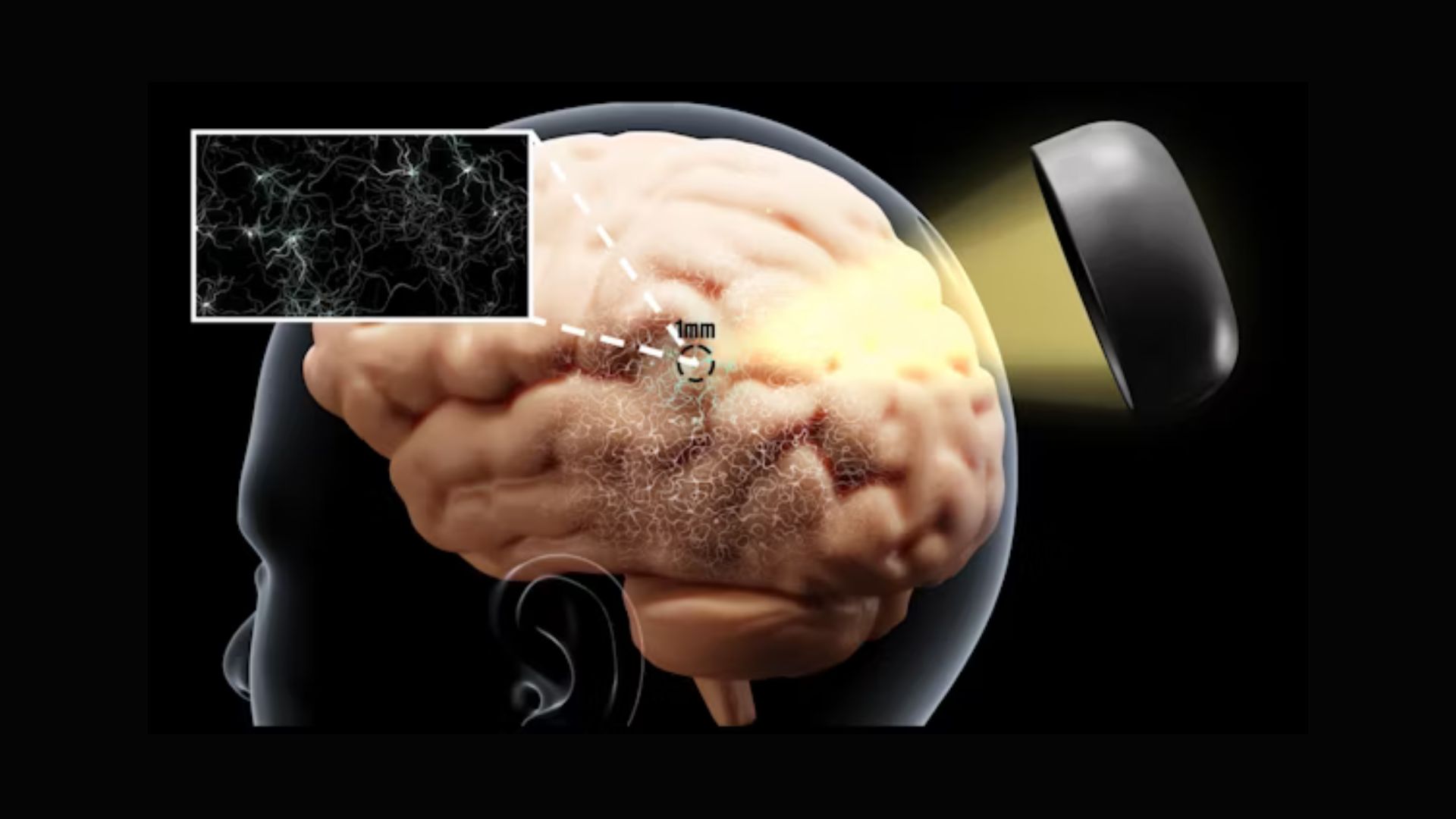Researchers at Washington University in St. Louis have innovated a non-invasive technology that combines a holographic acoustic device with genetic engineering. This allows them to precisely target specific neurons in the brain.
This breakthrough holds promise for the precise modulation of targeted cell types in various diseased brain regions.
Diseases of the human brain, such as Parkinson’s disease, affect multiple regions, requiring technology capable of accurately and flexibly targeting all affected areas simultaneously.
“By enabling precise and flexible cell type-specific neuromodulation without invasive procedures, AhSonogenetics provides a powerful tool for investigating intact neural circuits and offers promising interventions for neurological disorders,” Hong Chen, associate professor of biomedical engineering at the McKelvey School of Engineering and of Neurosurgery at the School of Medicine, said.
A non-invasive portable ultrasound device
Chen and her team developed a technique called AhSonogenetics, or Airy-beam holographic sonogenetics. This method uses a non-invasive portable ultrasound device to genetically modify neurons in mouse brains.
AhSonogenetics integrates several recent breakthroughs from Chen’s group into a single technology. In 2021, Chen and her team introduced Sonogenetics, a method that uses focused ultrasound to deliver a viral construct with ultrasound-sensitive ion channels to genetically selected neurons in the brain.
This technique uses low-intensity focused ultrasound to produce a short burst of heat, which opens the ion channels and activates the neurons. Chen’s team was the first to demonstrate that sonogenetics could influence the behavior of freely moving mice.
In 2022, Chen and her lab members designed and 3D printed a flexible and versatile device called an Airy beam-enabled binary acoustic metasurface that allowed them to manipulate ultrasound beams.
She is also working on Sonogenetics 2.0, a technique that combines the benefits of ultrasound and genetic engineering to non-invasively and accurately modulate specific neurons in the brains of humans and animals.
Sonogenetics: the technology behind the device
Sonogenetics provides researchers with a precise method to monitor brain activity, while airy beam technology allows bending or directing sound waves to create random beam patterns in the brain with high spatial resolution.
According to Yaoheng Yang, a postdoctoral research associate who received his PhD in biomedical engineering from McKelvey Engineering in 2022, this technology offers three distinct benefits to researchers.
“Airy beam is the technology that can give us precise targeting of a smaller region than conventional technology, the flexibility to beam to the target brain areas, and to target multiple brain areas simultaneously,” Yang said.
Chen and her team, including first authors Zhongtao Hu, a former postdoctoral research associate, and Yaoheng (Mack) Yang, individually designed each Airy-beam metasurface to serve as the basis for wearable ultrasound devices tailored for different applications and precise brain locations.
The team tested the technique on a mouse model of Parkinson’s disease. Using AhSonogenetics, they successfully stimulated two brain regions simultaneously in a single mouse, eliminating the need for multiple implants or interventions. This stimulation alleviated Parkinson’s-related motor deficits in the mouse model, such as slow movements, difficulty walking and freezing behavior.
ABOUT THE EDITORIAL
Srishti Gupta Srishti studied English Literature at Delhi University and has since realized that this is not her cup of tea. She has been an editor in every conceivable space and content type, from children’s books to magazine articles. She enjoys popular culture, reading contemporary fiction and nonfiction, crafts, and spending time with her cats. With a keen interest in science, Srishti is particularly drawn to beats on medicine, sustainability, gene studies and everything related to biology.
